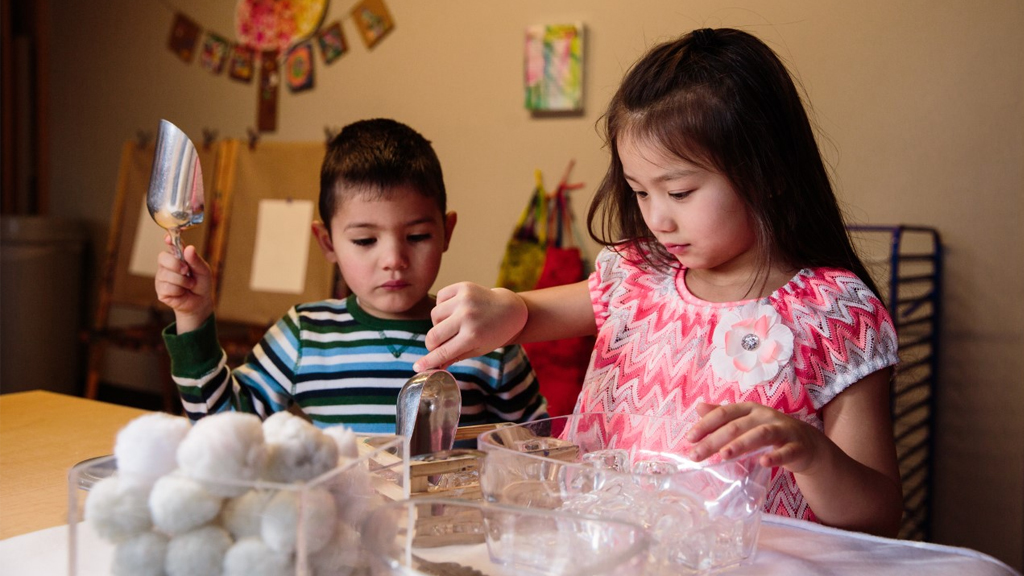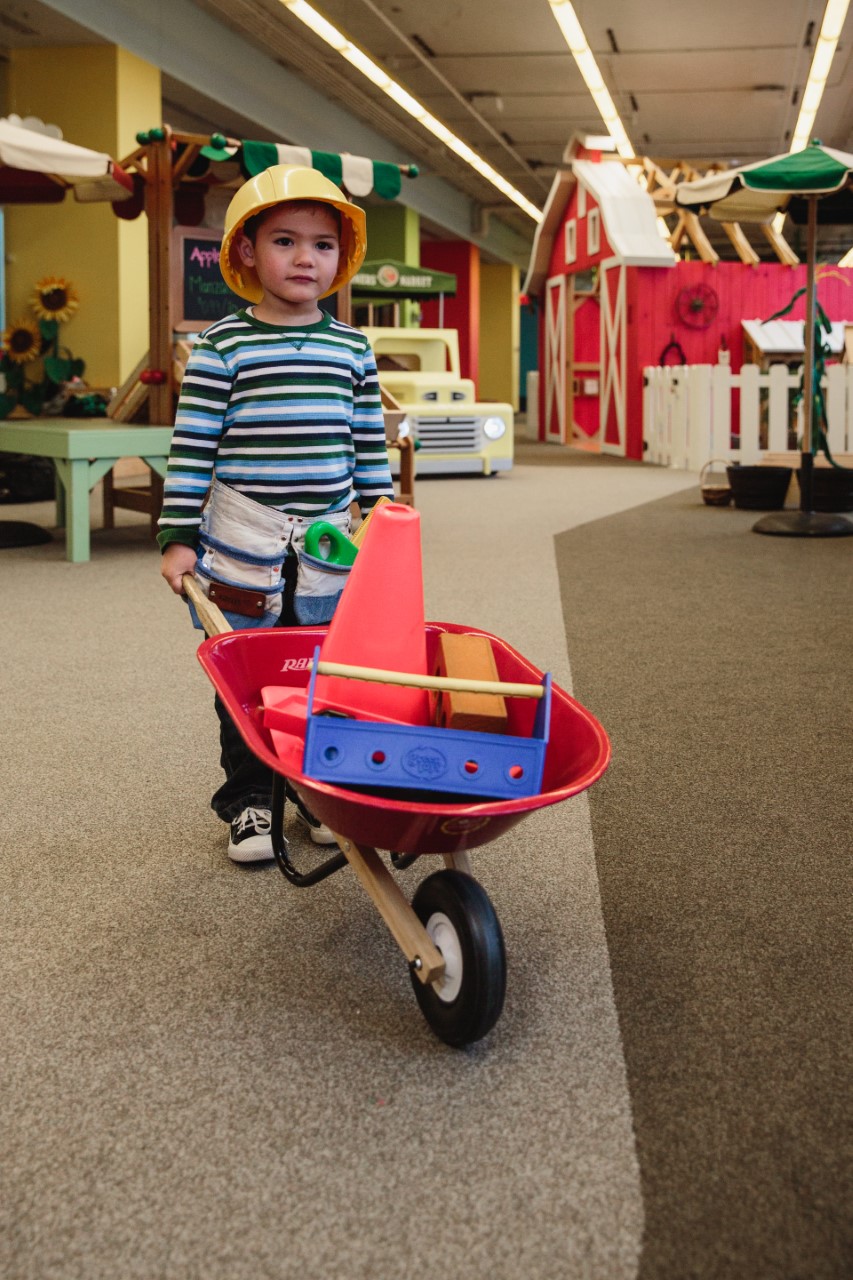Brief
Multilingual Families and Field Trips
Connected Science Learning October-December 2020 (Volume 2, Issue 4)
By Grace Jue Yeon Kim and Leslie C. Moore

Science museums strive to be learning resources for all families, including those from underserved communities and for whom English is an additional language. To achieve this goal, museums need to (1) connect and engage with bi/multilingual families, and (2) recognize, appreciate, and accommodate the diverse linguistic and cultural resources and patterns of interaction that families bring.
It is common practice for science museums to offer family-focused events and field trips for school groups, but it is far less common to combine families and field trips. In this brief, we propose the intentional inclusion of families in school field trips for young children as a practice with great potential to help museums connect and engage with bi/multilingual families, provided the field trip is designed to support family learning and language use.
This brief is based on findings from the Expanding Repertoires of Practice project, a collaboration between The Ohio State University and the Center of Science and Industry (COSI). We draw upon data collected during preschool classrooms’ field trips to COSI, focusing on the experiences of bi/multilingual families. Families were followed and video-recorded as they engaged with exhibits.
Children’s learning in science museums varies depending on the level of guidance and scaffolding (Andre, Durksen, and Volman 2017). Parents can make a critical difference in children’s learning in museums; when parents are involved, children’s interaction with exhibits becomes richer and more engaged (Amsel and Goodwin 2004). Research on family talk in museums has illuminated how families use language to construct new understandings and how talk and other sense-making behaviors are mediated by exhibit affordances (Humphrey and Gutwill 2005).

English-speaking parents often find information through signage, incorporating language from exhibit labels into their talk (Ash 2004). Multilingual family members may not use these resources and strategies, depending on English language proficiency. For some caregivers in our study, English-only signage presented linguistic barriers as they sought to explain the instructions, purpose of exhibits, and/or scientific concepts that the exhibits were designed to present. Caregivers with basic English skills rarely referenced signage, relying instead on background knowledge to guide their children’s engagement with exhibits.
Despite linguistic barriers, family members collaboratively created learning opportunities for children by bringing together their individual communicative repertoires (Rymes 2010), forming a collective communicative repertoire upon which they could draw to make meaning of exhibits. Individuals with higher English proficiency became “language brokers” (Tse 1995) as they translated and interpreted exhibit information. Family members also used multiple resources—including spoken languages, objects, text, and pictures—to make sense of their experiences and co-constructed shared understandings grounded in their hands-on science learning experiences. Moreover, multilingual signage gave those families much greater access to the purpose and meaning of an exhibit, enabling caregivers to interact with their children with greater confidence and conversation.
Intentional inclusion of bi/multilingual families in field trips can increase families’ access to the science museum and enhance emergent bilingual children’s learning in the museum environment. For most of the focal families, the field trip was an introduction to the science museum as a place for them and their young children. Moving through the museum, focal family groups collaboratively created multilingual and multicultural learning spaces for their children, with caregivers using multiple languages to guide, model, and explain as they interacted with exhibits.
We encourage science museums to invite, welcome, and support bi/multilingual family members as key participants in school field trips for young children. Multilingual signage, illustrations, and signs in plain language—along with demonstration images and videos—can support caregivers with basic English proficiency. Through such intentional inclusion and evaluation of the practice, museums can learn more about bi/multilingual families and how to support them to create more successful museum experiences.
Acknowledgment
The Expanding Repertoires of Practice project was made possible with support from the National Science Foundation DRL 1420724. Any opinions, findings, and conclusions or recommendations expressed in this material are those of the authors and do not necessarily reflect the views of the National Science Foundation. We are grateful to the many science and children’s museum practitioners and early childhood educators who have contributed expertise and guidance.
Grace Jue Yeon Kim (kim.6874@buckeyemail.osu.edu) is a PhD candidate in Foreign, Second, and Multilingual Language Education at The Ohio State University in Columbus, Ohio. Leslie C. Moore (moore.1817@osu.edu) is an Associate Professor in the Department of Teaching and Learning and the Department of Linguistics at The Ohio State University in Columbus, Ohio.
citation: Kim, G.J.Y., and L.C. Moore. 2020. Multilingual families and field trips. Connected Science Learning 2 (4). https://www.nsta.org/connected-science-learning/connected-science-learning-october-december-2020/multilingual-families
Multilingual Learners Multicultural STEM Early Childhood Informal Education


